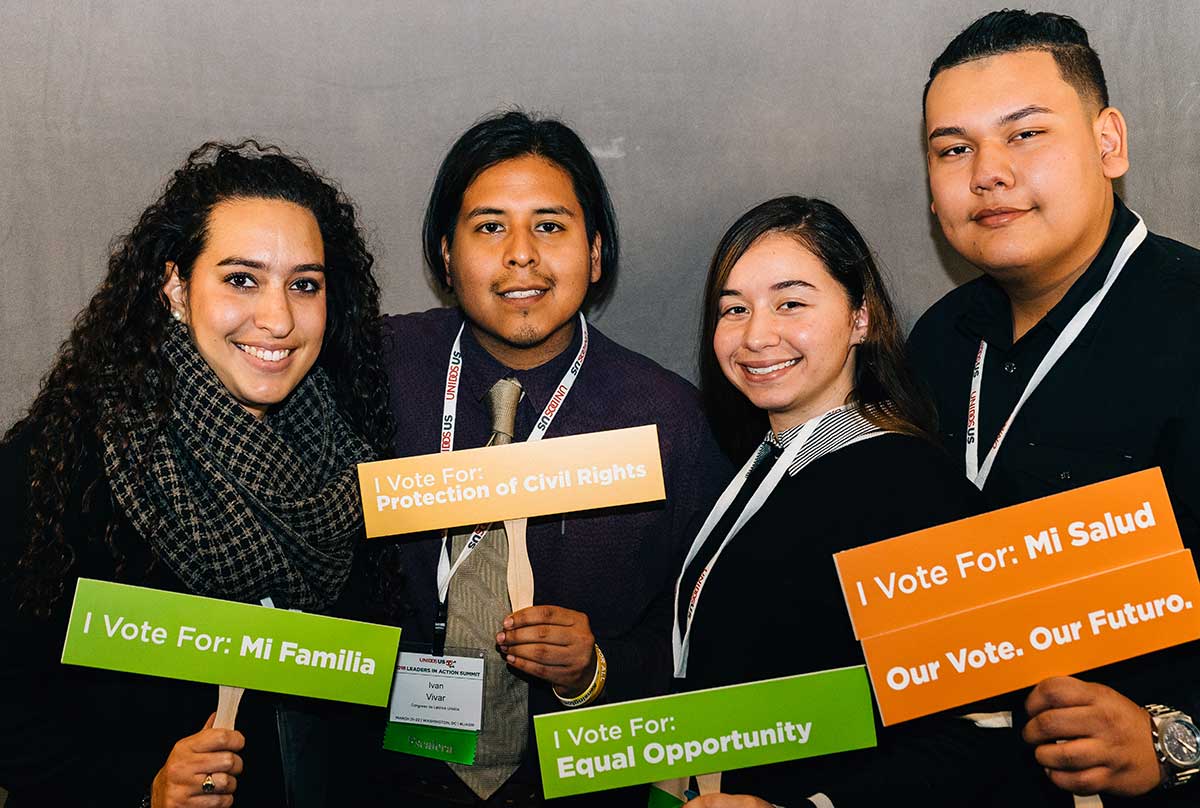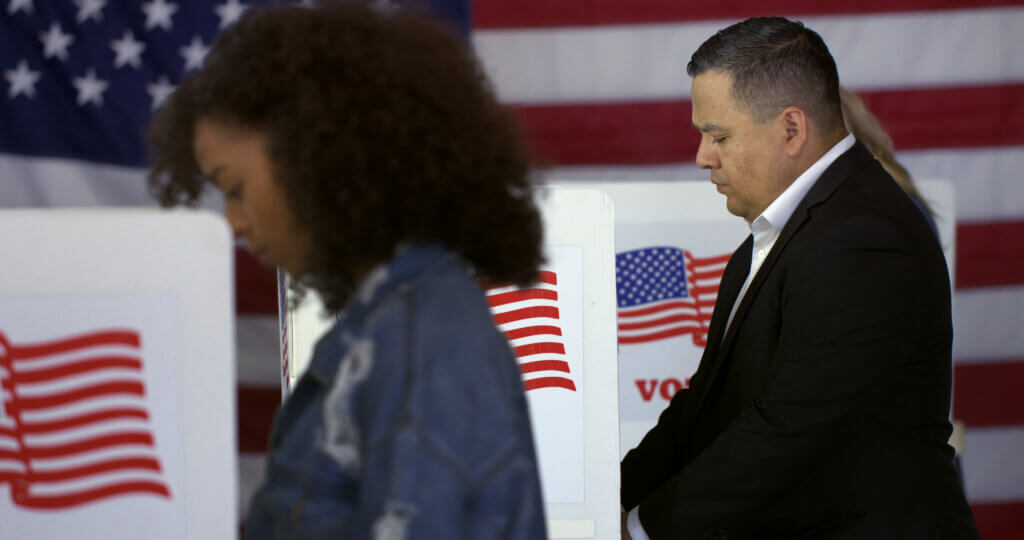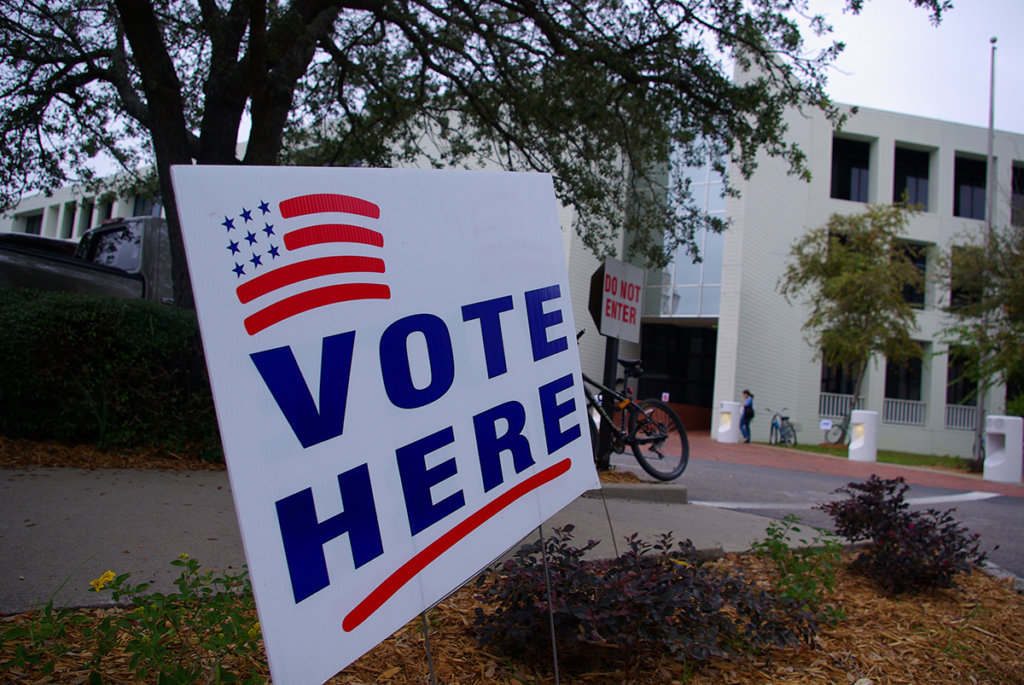Latino Voters Will Play a Decisive Role in 2024
By: Clarissa Martinez De Castro, Vice President of UnidosUS Latino Vote Initiative
Hispanics are the second largest group of voting-age Americans and a critical factor in the winning equations for the White House, Congressional balance of power, and numerous state and local races. Hispanic voters can be a stabilizing force in American politics. As illustrated in extensive UnidosUS polling, they generally reject extremes, oppose taking away rights, and want to see elected officials willing to work together to get things done. It is clear that continued investments in closing the registration gap and expanding Latino voices in the voting booth would benefit fellow Americans by seeking an economy that works for all , keeping communities safe from gun violence, advocating for an orderly and humane immigration system, and addressing climate change, among other issues.
Latino voters will play a decisive role in 2024. Latinos are geographically concentrated in states that are rich in primary delegates and electoral college votes (CA, FL, NY, TX), are electoral battlegrounds (AZ, NV), or both. In addition, given razor-thin margins of victory, even in battleground states with smaller Latino populations—like Georgia, Pennsylvania, Wisconsin—these voters have the ability of tipping the outcome. Latinos also stand to play a decisive role in a number of contested House seats (see Competitive Districts | UnidosUS). This reality is in addition to their already significant role in shaping state and local races.
Keep up with the latest from UnidosUS
Sign up for the weekly UnidosUS Action Network newsletter delivered every Thursday.

A continuously growing electorate. Given the Latino community’s youth, every election cycle will see a significant number of new Hispanic voters. In 2024, it is anticipated that 17.5 million Latinos will cast a ballot, and 1 in 4 of them will be doing so for the first time in a presidential election. A full 38% of this electorate will be new since the Trump/Clinton match up of 2016. To win over their support, candidates and their respective parties must do early and meaningful outreach to these voters.
Building on the fact that more than 80% of Latino registered voters vote in presidential elections (88% in 2020), a critical opportunity is tackling the registration gap: 13 million and growing. Yet, underinvestment in and ineffective outreach to these voters persist, compounded by mistaken assumptions about this electorate. Much of the work to close the registration gap has been left to nonpartisan, nonprofit organizations, with anemic funding to do so, particularly when compared to the expenditures seen every election cycle. (To see the voter registration opportunity gap by state and other Latino vote statistics, see Hispanic Electorate Data Hub | UnidosUS. )
Party support. Generally, at the presidential level, Latino voter support has averaged about two-thirds supporting Democrats and one-third Republicans. The overall combined average for all available election-eve and exit poll data for the period 1988-2020 is 29% support for Republicans and 67% support for Democrats. The high-water mark for Republicans was achieved by George W. Bush in 2000. For Democrats, depending on the polling source, Bill Clinton, Barack Obama, or Hilary Clinton, who all garnered above 70%. (See Appendix B for a chart with results for each presidential year in that period).
Notably, in the past, this electorate has shown evidence of ticket-splitting (not casting a straight party ballot ), and a growing number are identifying as independent.
Issue Priorities. Economic issues have always been a top concern for Latino voters. However, for a long period, if outreach to these voters happened, it would focus largely on immigration, which had been a lower priority. Notably, in 2010, immigration rose to the top five concerns, following SB1070, the “show me your papers” law in Arizona. A year out from the 2024 election, of the top issues Hispanic voters wanted to see elected officials address, four of the top five were economic/pocket book issues, specifically inflation and the rising cost of living (#1), wages (#2), healthcare costs (#3), and housing affordability (#5) — which rose to the top five as a stand-alone for the first time. At #4 was gun violence, with voters concerned that guns and assault weapons are too easy to access. While not in the top five priority issues, immigration, at #6, was ranked higher than it was in 2022, with the top action items being providing a path to citizenship for long-residing undocumented individuals and Dreamers. (For a look at Hispanic voter priorities over the last decade, see the chart below on this page. For additional details and segmentation see Polling/Issues | UnidosUS).
Candidates matter, issues matter, and meaningful outreach is essential. Unfortunately, candidates and campaigns have tended to neglect this electorate or take it for granted. A majority of Latinos, including those highly likely to vote and in battleground states, have consistently reported not being contacted by campaigns and parties. The last couple of cycles have seen increased outreach in some locations, and 2024 outreach seems to be off to an earlier start. This proactive outreach is key since Latino voters, who used to largely vote on Election Day, are indicating that about 1/3 intend to vote early, 1/3 by mail, and 1/3 on Election Day.

APPENDIX A




